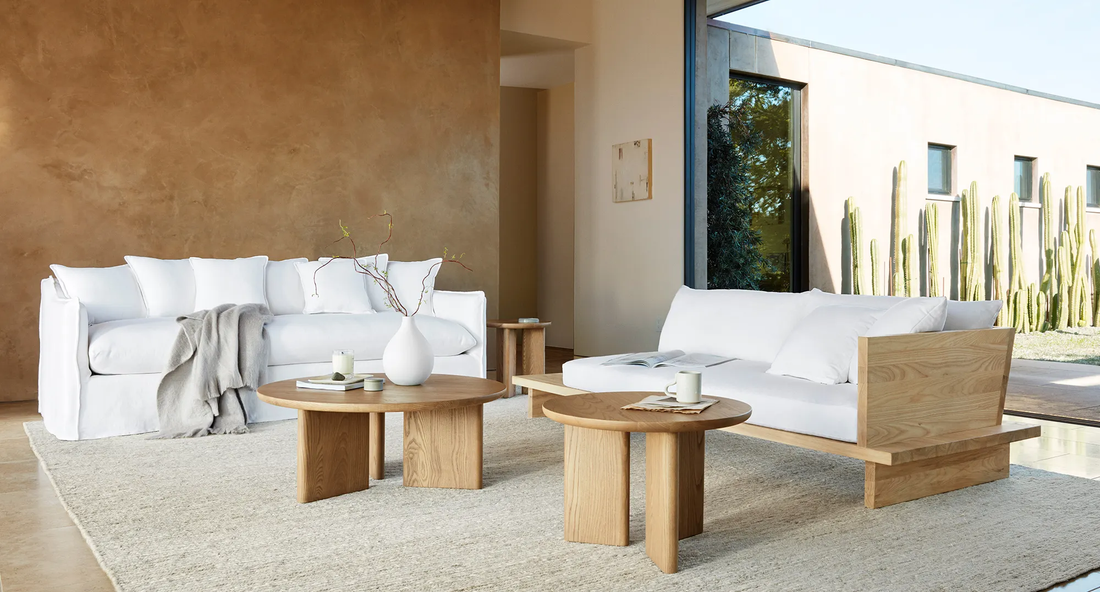
DEFINE A PALETTE
When designing a room with a variety of furniture styles, it's important to create a cohesive feel by defining a more neutral or tonal color palette. Consider the scale, shape, and function of each piece and find a common element to tie them together, such as color palette, wood tone, or shape and silhouette. A tonal palette provides flexibility to experiment with proportion, materiality, and mixing styles from different design eras. Choosing upholstery and wood tones in a similar color story allows each piece's distinct shape and details to shine while maintaining a cohesive balance in the overall look.
WORK IN A BOLD STATEMENT
With a unified color palette in consideration, incorporating a standout seating piece with a bold and distinctive silhouette can achieve a look that's both innovative and versatile. Tiffany recommend the statement-making Gaia for its sculptural shape and mixed materiality. Custom made by master woodworkers, The Gaia Sofa is a conversation-starting piece that sets the tone for a curated room that feels intentionally designed.
FIND THE BALANCE
In working with a room of mixed furniture styles, it's important to maintain a healthy balance of similar tones and contrasting textures, especially with the finishing pieces. Adding a nesting table set to a room not only provides versatile function in the space, but adds warmth and texture with its handcrafted solid wood frame.


